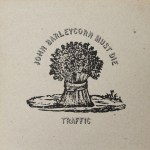More of the Music of Steve Winwood
Many years ago, perhaps in 2015, while playing an especially transparent copy of John Barleycorn, we learned something new about the album. Although it was a title I had been playing since it came out all the way back in 1970, apparently things had changed.
This pressing made it clear — really, for the first time — exactly what Winwood was doing with his left hand on the piano during the song Glad.
There are two musical figures that one can focus on: one involving the lower notes, which tend to be blurry, obscured and murky on most pressings, and two, the right-handed higher notes, which are typically much more clear and audible in the mix.
Only the very best copies let us “see” the bass notes of the piano so clearly and correctly. Next time you’re in the mood to compare different pressings of Barleycorn, pay special attention to the lower notes of the piano on Glad. It is our contention, backed by mountains of evidence, that no two copies of the album will get that piano to sound the same. (It will also help if you have large dynamic speakers with which to do the test.)
Lately we have been writing quite a bit about how pianos are good for testing your system, room, tweaks, electricity and all the rest, not to mention turntable setup and adjustment.
- We like our pianos to sound natural (however one chooses to define the term).
- We like them to be solidly weighted.
- We like them to be free of smear, a quality that is rarely mentioned in the audiophile record reviews we read.
What to Listen For – Side Two
The toughest test on side two is the first track. Getting the voices right is practically impossible. If the voices are full, smooth, yet breathy and clear, you have that rare copy that actually gets the midrange right. Not many do.
The flute (a major element of the music if you know the album at all) should be wonderfully airy if your copy (and stereo) is any good at all. Chris Wood’s sax — which is all over the record, and beautifully recorded I might add — can sound amazing as well, with good body and harmonic texture.
Note how little processing there is to the sound of the horns and woodwinds, how real they sound. This is unusual to say the least in the world of pop records.
Vinyl Thoughts
It’s virtually impossible to find quiet copies of this record, let alone ones that sound anything like our best pressings. There’s always going to be some (hopefully slight) inner groove distortion and there’s always going to be some surface noise. United Artist vinyl is not known for being particularly quiet, so had you cracked open a brand new copy of the album in 1970 you would probably have heard plenty of noise back then too.
This is of course how MoFi got their start. The major labels were producing such a high percentage of defective pressings that the door was open for someone to come along with a flat, quiet pressing, especially if it sounded “good” to boot. They realized they could even charge twice the price — $20 back when a major label pressing was well under $10.
We have since come to learn, at great expense to be sure, that most MoFi’s simply don’t sound very good. The better your stereo gets, the more obvious their shortcomings become.
That’s a story you’ve no doubt already heard, since we’ve been telling it for more than twenty years. [Make that 36 as of 2023.]
Further Reading
- New to the Blog? Start here
- More breakthrough pressing discoveries
- Helpful advice on doing your own shootouts

 More of the Music of Traffic
More of the Music of Traffic